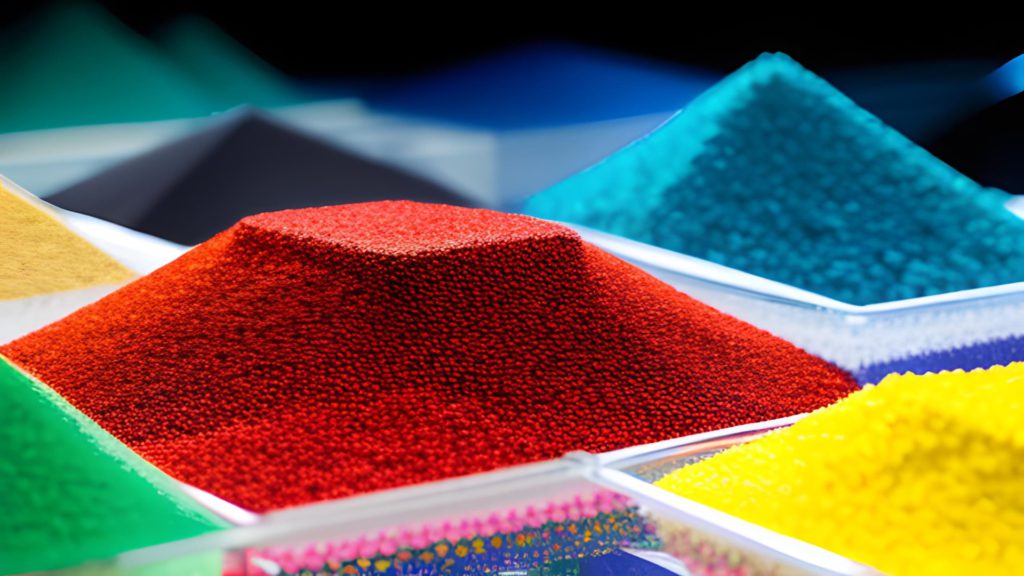Testing and Characterization
WE PERFORM TESTS ACCORDING TO THE MAIN INTERNATIONAL STANDARDS

Proplast performs quality, chemical, rheological testing from the material to the finished product. The Testing and Characterization laboratory offers a wide range of tests on plastic materials. All tests are performed in accordance with the main international ISO, ASTM standards and specifications of the main application sectors (automotive, medical, packaging…..). The team is, in addition, able to provide companies with consultancy aimed at identifying and resolving nonconformities, and experimental support throughout the development of new materials and subsequent transformations.
-
Faylure analysis
-
Quality control
-
Compliance Verification
-
Material selection

Analysis of nonconformities
We carry out analytical investigations with combined techniques in order to identify the main causes of nonconformities that may occur at various stages of materials and components production processes. Upon request, we help our clients with visits to production sites to ensure that the process and production constantly conform to the desired parameters.
- analytical investigations using combined techniques
- visits to production sites

Quality control of incoming materials
We support companies in the control of various batches of incoming material, performing combinations of analytical techniques to verify the constancy of parameters identified as relevant. The checks can be performed on raw materials, semi-finished or finished products. At the conclusion of all tests, a verification report is issued summarizing all the values obtained and any nonconformities.
- Support in the control of incoming materials
- final verification report

Verification of compliance with specifications and data sheets
We perform full characterization of polymeric materials against the values most commonly reported in data sheets and specifications. Verification of compliance with specifications can also be performed on specific production batches regardless of standards or marks of compliance.
- comprehensive characterization of polymeric materials
- verification of compliance with the specifications

Support activities in material selection for each application
We perform comparison characterizations between materials in use and those under study based on the specimens provided. The use of different analytical techniques makes it possible to qualitatively and quantitatively determine and control plastic materials to achieve the best performance during production and product life.
- Comparison of materials in use and those under study
- Quality and quantity control of materials
Do you have technical or compliance issues?
We can offer you the solution that best suits your needs
Equipment and tests
Some tests performed in our laboratories
Chemical-physical analyses are aimed at determining the chemical nature of the polymer bases, fillers and additives present in the constituent materials of the manufactured articles under investigation. It is, in addition, possible to evaluate the possible presence of pollutants and the differences present between different batches of the same polymers to check for possible causes of anomalies in processing or to obtain information on new polymeric compounds or blends.
| EQUIPMENT | BRAND | MODEL |
DSC | TA Instruments | Q2000 |
Karl Fischer titration | Mettler Toledo | DL 31 |
Measuring machine | ARCS | KIM-3020CU |
Gloss meter | Erichsen | 503 |
OTR / WTR Permeabilimeter | Extrasolution | Multiperm |
Digital thickness gauge | ATS FAAR | Sylvac |
Visible spectrophotometer | MINOLTA | CM-36dG |
FTIR Spectrophotometer | Perkin Elmer | Spectrum 400 |
FTIR microscope | Perkin Elmer | Spotlight 200 |
Titrator | Mettler Toledo | T50 |
Automatic viscometer | SI Analytics | AVS 370 OPT |
The application of classical tensile, flexural, compressive and impact methods allows the evaluation of mechanical properties on standard specimens according to all the most important international and industry standards (UNI ISO, ASTM, DIN, AFNOR, BSI, SAE, FIAT Auto, PSA, VW…..). The data obtained from mechanical tests are extremely useful for the design or prototyping of new plastic products and directly processed by the Product Engineering area. After viewing the geometry and usage, mechanical tests can be performed directly on the finished artifact by designing and making ad hoc grips. Finally, recently acquired devices for performing the CREEP test make it possible to determine the deformation under constant load over time.
| EQUIPMENT | BRAND | MODEL |
Climate chamber | PERANI | AC520 |
Climate chamber | Votsch | VC4150 |
Climatic chamber for dynamometer | Zwich Roell | BW91255 |
50KN load cell for dynamometer | Zwich Roell | Xforce K |
10KN load cell for dynamometer | Zwich Roell | K |
500N load cell for dynamometer | Zwich Roell | Xforce P |
50N load cell for dynamometer | Zwich Roell | Xforce HP |
Dynamometer | Zwich Roell | 50kN Allround tabletop |
Dynamometer | Zwich Roell | 10kN BTC-FR010TH.A50 |
DMA | TA Instruments | Q800 |
Durometer | ATS FAAR | Shore D |
Durometro | ATS FAAR | Shore A |
| Pendulum | ATS FAAR | Impats-15 |
| Elmendorf Pendulum | AHP PLASTIK MAKINA | Elmen 800 |
Device for dart free-fall tests on film | GBPI | GBD-L2 |
| EQUIPMENT | BRAND | MODEL |
HDT / Vicat | ATS FAAR | HDT / Vicat Tester MP3 |
Muffola | Nabertherm | L3/C6 |
| Thermobalance | TA Instruments | TGA 550 |
Thermobalance for humidity determination | Mettler Toledo | HB 43 |
| EQUIPMENT | BRAND | MODEL |
Plastometer x MVR e MFI | CJTI | XNR 400 C |
Plate rheometer | TA Instruments | Discovery HR-2 |
| Capillary rheometer | CEAST | Smart Rheo 2000 Twin |
| EQUIPMENT | BRAND | MODEL |
Optical microscope | Leica | DM2500P |
| EQUIPMENT | BRAND | MODEL |
Climate chamber | PERANI | AC520 |
Climate chamber | Votsch | VC4150 |
Xenotest | Q-LAB | Q-SUN XE-3 mod. X3HSE |
Analysis and methods used
If the method you are looking for is not listed, please contact us
| Standard | Description |
|---|---|
| ASTM F1927-14 | Determination of Oxygen Gas Transmission rate (OTR) |
| ASTM D 395 | Standard Test Methods for Rubber Property -- Compression Set |
| ASTM D1003_Meth.B | Haze and Luminous Transmittance of Transparent Plastics |
| ASTM D1238 | Standard test method for Melt Flow Rates of thermoplastics by extrusion Plastometer |
| ASTM D1525-17 | Standard Test Method for Vicat Softening Temperature of Plastics |
| ASTM D1894 | Standard Test Method for Static and Kinetic Coefficients of Friction of Plastic Film and Sheeting |
| ASTM D1922 | Standard Test Method for Propagation Tear Resistance of Plastic Film and Thin Sheeting by Pendulum Method |
| ASTM D1938 | Standard Test Method for Tear-Propagation Resistance (Trouser Tear) of Plastic Film and Thin Sheeting by a Single-Tear Method |
| ASTM D256 | Standard Test Methods for Determining the Izod Pendulum Impact Resistance of Plastics |
| ASTM D2659-16 | Standard Test Method for Column Crush Properties of Blown Thermoplastic Containers |
| ASTM D2732-20 | Standard Test Method for Unrestrained Linear Thermal Shrinkage of Plastic Film and Sheeting |
| ASTM D308 | Standard practice for Computing the Colors of Objects by using the CIE System |
| ASTM D3418 | Standard Test Method for Transition Temperatures and Enthalpies of Fusion and Crystallization of Polymers by Differential Scanning Calorimetry |
| ASTM D3835 | Determination of Properties of Polymeric Materials by Means of a capillary Rheometer |
| ASTM D3985-05 | Oxygen Gas Transmission rate (OTR) through plastic film and sheeting |
| ASTM D4440-15 | Standard Test Method for Plastics: Dynamic Mechanical Properties Melt Rheology |
| ASTM D4603 | Standard Test Method for Determining Inherent Viscosity of Poly(Ethylene Terephthalate) (PET) by Glass Capillary Viscometer |
| ASTM D523 | Standard Test Method for Specular Gloss |
| ASTM D543 | Standard Practices for Evaluating the Resistance of Plastics to Chemical Reagents |
| ASTM D5630 | Standard Test Method for Ash Content in Plastics |
| ASTM D570 | Standard Test Method for Water Absorption of Plastics |
| ASTM D638 | Standard Test Method for Tensile Properties of Plastics |
| ASTM D648 | Deflection temperature of plastics under flexural load in the edgewise position |
| ASTM D790 | Flexural properties of unreinforced and reinforced plastics |
| ASTM D792-Met.B | Standard Test Methods for Density and Specific Gravity (Relative Density) of Plastics by Displacement |
| ASTM D882 | Standard Test Method for Tensile Properties of Thin Plastic Sheeting |
| ASTM F1249 | Standard Test Method for Water Vapor Transmission Rate Through Plastic Film and Sheeting Using a Modulated Infrared Sensor |
| ASTM F1307-20 | Standard Test Method for Oxygen Transmission Rate Through Dry Packages Using a Coulometric Sensor |
| ASTM F88-M | Standard Test Method for Seal Strength of Flexible Barrier Materials |
| DIN 53504 | Testing of rubber -- Determination of tensile strength at break tensile stress at yield elongation at break and stress values in a tensile test |
| DIN 53735 | Testing of plastics -- Determination of the melt flow index of thermoplastics |
| ISO 11357-1 | Plastics -- Differential scanning calorimetry (DSC) Part 1: General principles |
| ISO 11357-2 | Plastics -- Differential scanning calorimetry (DSC) -- Part 2: Determination of glass transition temperature and step height |
| ISO 11357-3 | Plastics -- Differential scanning calorimetry (DSC) -- Part 3: Determination of temperature and enthalpy of melting and crystallization |
| ISO 11443 | Plastics -- Determination of the fluidity of plastics using capillary and slit-die rheometers |
| ISO 1183 | Plastics -- Methods for determining the density of non-cellular plastics -- Part 1: Immersion method liquid pyknometer method and titration method |
| ISO 1269 | Plastics-Homopolymer and copolymer resins of vinyl chloride - Determination of volatile matter (including water) |
| ISO 13937-2 | Textiles -- Tear properties of fabrics |
| ISO 15512 | Plastics -- Determination of water content (Karl Fischer) |
| ISO 1628 | Determination of viscosity number and limiting viscosity number |
| ISO 20200 | Plastics -- Determination of the degree of disintegration of plastic materials under composting conditions in a laboratory-scale test |
| ISO 22314-06 | Plastics -- Glass-fibre-reinforced products -- Determination of fibre length |
| ISO 2813 | Paints and varnishes -- Determination of gloss value at 20° 60° and 85° |
| ISO 6383-2 | Plastics --Film and sheeting - Determination of tear resistance - Part 2: Elmendorf method |
| ISO 6721-10 | Plastics -- Determination of dynamic mechanical properties Part 10: Complex shear viscosity using a parallel-plate oscillatory rheometer |
| ISO 8067 | Flexible cellular polymeric materials -- Determination of tear strength |
| UNI EN 14477 | Packaging - Flexible packaging material - Determination of puncture resistance - Test methods |
| UNI EN ISO 1133 | Plastics -- Determination of the melt mass-flow rate (MFR) and the melt volume-flow rate (MVR) of thermoplastics |
| UNI EN ISO 11358-1 | Plastics -- Thermogravimetry (TG) of polymers |
| UNI EN ISO 13468-2 | Plastics -- Determination of the total luminous transmittance of transparent materials |
| UNI EN ISO 13968 | Plastics piping and ducting systems -- Thermoplastics pipes -- Determination of ring flexibility |
| UNI EN ISO 1421 | Rubber- or plastics-coated fabrics -- Determination of tensile strength and elongation at break |
| UNI EN ISO 14040 | Environmental management -- Life cycle assessment -- Principles and framework |
| UNI EN ISO 14044 | Environmental management -- Life cycle assessment -- Requirements and guidelines |
| UNI EN ISO 14067 | Greenhouse gases -- Carbon footprint of products -- Requirements and guidelines for quantification |
| UNI EN ISO 178 | Plastics -- Determination of flexural properties |
| UNI EN ISO 179-1 | Plastics -- Determination of Charpy impact properties -- Part 1: Non-instrumented impact test |
| UNI EN ISO 180 | Plastics -- Determination of Izod impact strength |
| UNI EN ISO 1856 | Flexible cellular polymeric materials -- Determination of compression set |
| UNI EN ISO 1923 | Cellular plastics and rubbers -- Determination of linear dimensions |
| UNI EN ISO 294-4 | Injection moulding of test specimens of thermoplastic materials -- Part 4: Determination of moulding shrinkage |
| UNI EN ISO 306 | Plastics -- Thermoplastic materials -- Determination of Vicat softening temperature (VST) |
| UNI EN ISO 307 | Plastics -- Polyamides -- Determination of viscosity number |
| UNI EN ISO 34-1 | Rubber vulcanized or thermoplastic -- Determination of tear strength |
| UNI EN ISO 3451-1 | Plastics -- Determination of ash General methods |
| UNI EN ISO 3671 | Plastics -- Aminoplastic moulding materials -- Determination of volatile matter |
| UNI EN ISO 4892-2 | Plastics -- Methods of exposure to laboratory light sources Part 2: Xenon-arc lamps |
| UNI EN ISO 527 | Plastics -- Determination of tensile properties |
| UNI EN ISO 60 | Plastics -- Determination of apparent density of material that can be poured from a specified funnel |
| UNI EN ISO 6721-1 | Plastics -- Determination of dynamic mechanical properties Part 1: General principles |
| UNI EN ISO 75 | Plastics -- Determination of temperature of deflection under load |
| UNI EN ISO 7765-1 | Plastics film and sheeting -- Determination of impact resistance by the free-falling dart method Part 1: Staircase methods |
| UNI EN ISO 8295 | Plastics -- Film and sheeting -- Determination of the coefficients of friction |
| UNI EN ISO 845 | Cellular plastics and rubbers -- Determination of apparent density |
| UNI EN ISO 868 | Plastics and ebonite -- Determination of indentation hardness by means of a durometer (Shore hardness) |
| UNI EN ISO 9969 | Thermoplastics pipes -- Determination of ring stiffness |
| UNI ISO 48-4 | Rubber vulcanized or thermoplastic -- Determination of hardness Part 4: Indentation hardness by durometer method (Shore hardness) |
| UNI ISO 815-1 | Rubber vulcanized or thermoplastic -- Determination of compression set |